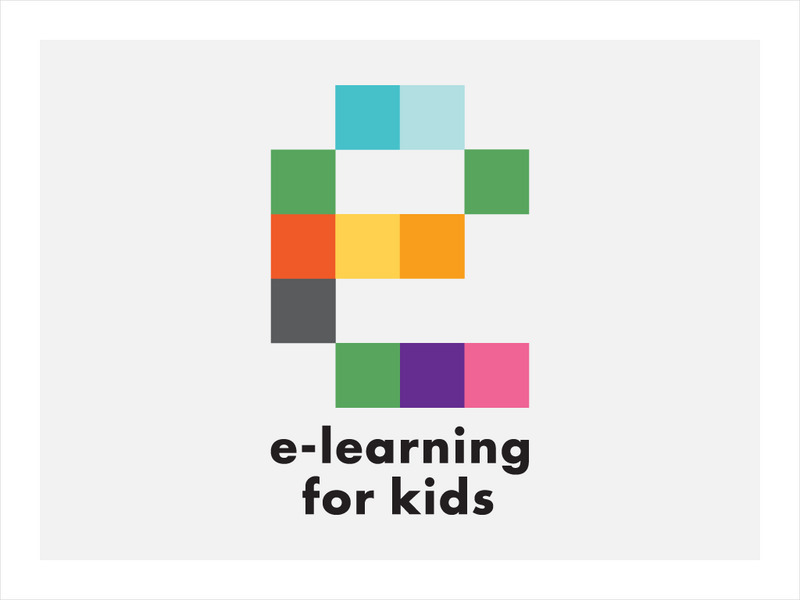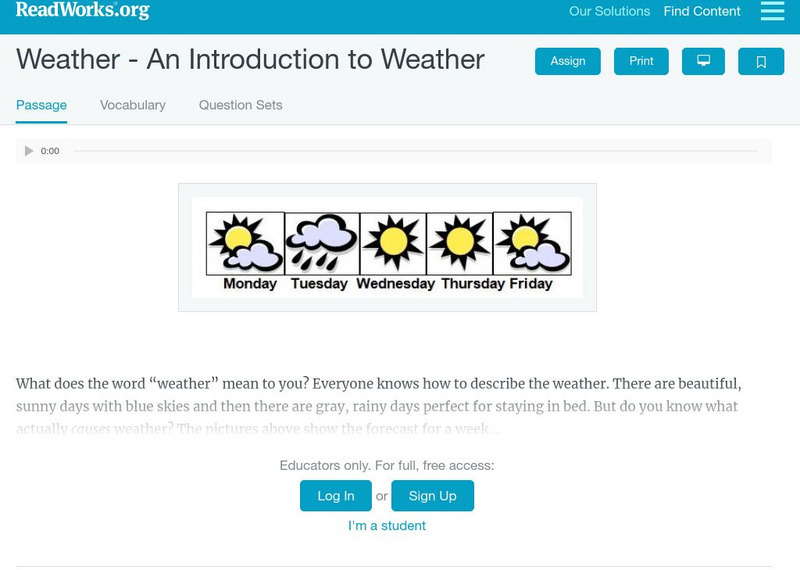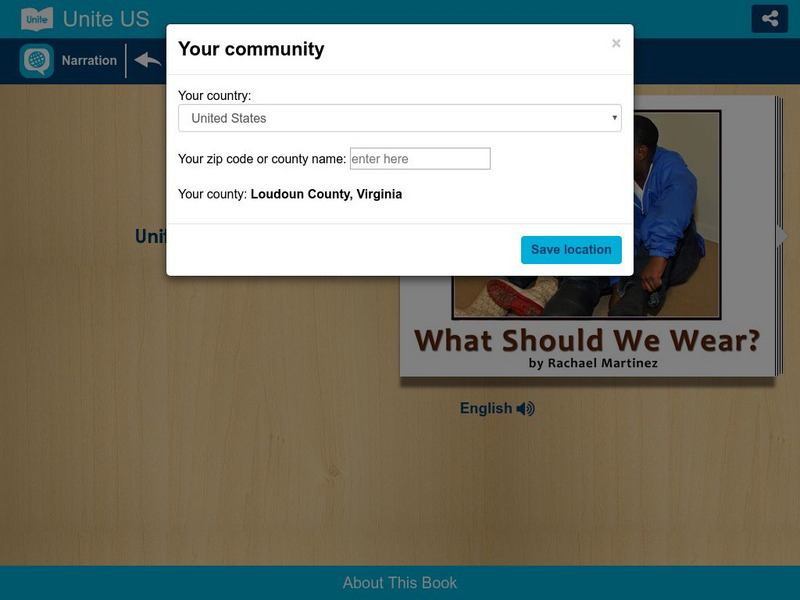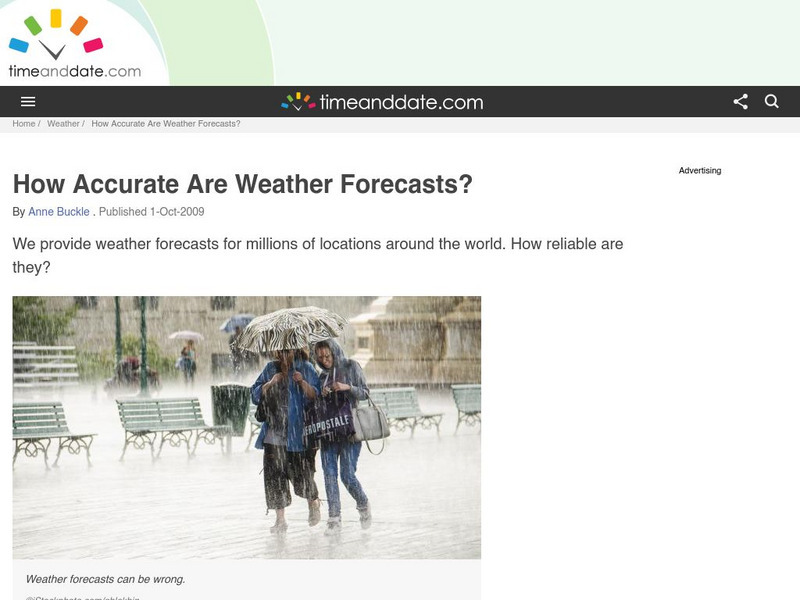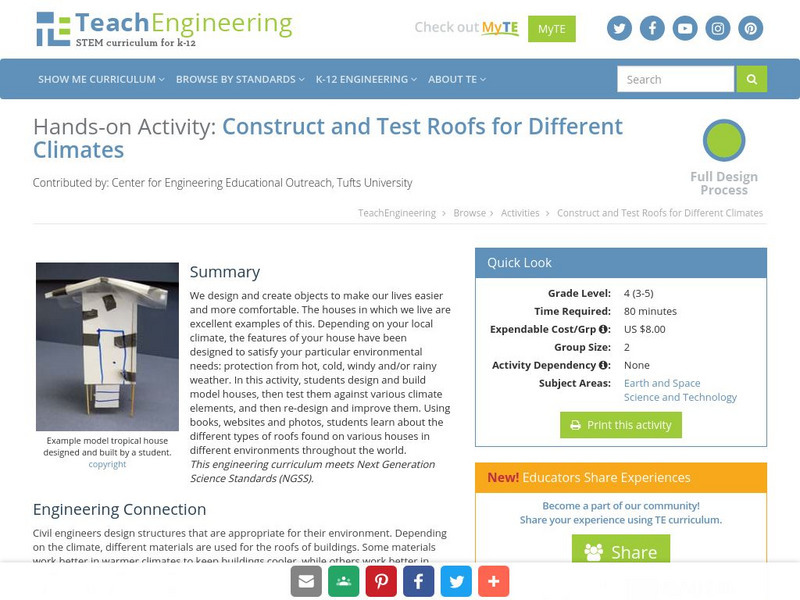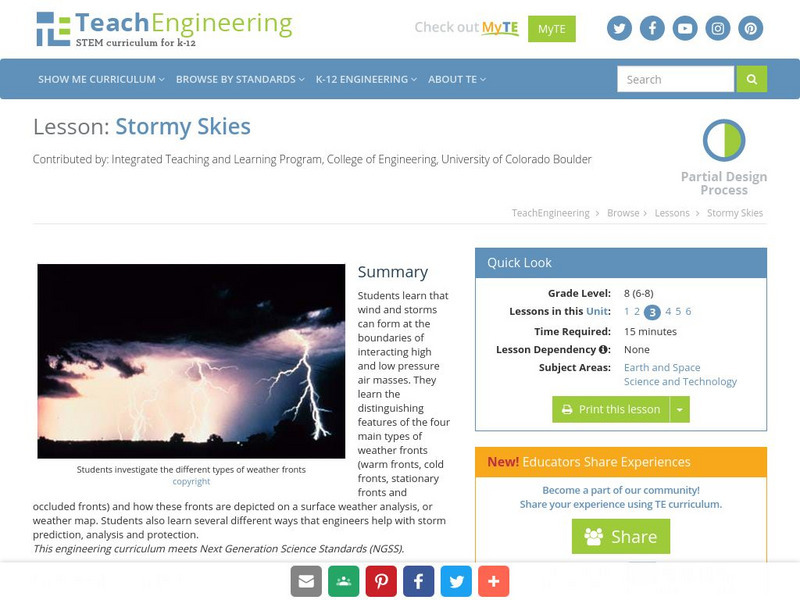E-learning for Kids
E Learning for Kids: Science: Antarctica Research Center: Describe Different Weather Patterns
This module provides informational text about weather. Students will learn about precipitation and storm fronts. Students will also learn about different types of storms, including the following: hurricanes, cyclones, and typhoons.
Dan Satterfield
Dan's Wild Weather Page: Clouds
Find out all about clouds and how they are formed at this site from Dan's Wild Weather Page. Nice photographs of different types of clouds enrich the site.
Read Works
Read Works: Weather : An Introduction to Weather
[Free Registration/Login Required] Requires free membership.T his passage is a stand-alone curricular piece that reinforces essential reading skills and strategies and establishes scaffolding for vocabulary learning. It contains...
Alabama Learning Exchange
Alex: Exploring Weather Disasters
During this lesson, students will discover the differences in four types of weather disasters. They will collect information from selected Internet websites and create a multimedia presentation to demonstrate what they have learned.
Science Education Resource Center at Carleton College
Serc: Investigating the Rate of Weathering on Various Rock Types.
In this Earth Science field investigation, students will make observations of the rock above and below the Minneopa State Park waterfalls. Students will then make observations of gravestones at Minneopa Cemetery. Through these...
SMART Technologies
Smart: Weather Patterns
In this lesson students will be able to identify and describe how different types of storms form (hurricanes, tornadoes, winter storms and thunder storms). The activity can be used on the SMART board or in SLS Online. Covert slides 6, 8,...
Channel 4 Learning
4 Learning: Geography Essentials, Weather Around the World
This resource offers in-depth information on weather and different types of climate including desert, tropical rain forests, and more. Also provides worksheets (Word documents) and images relating to weather.
Unite for Literacy
Unite for Literacy: Family: What Should We Wear?
In this story, a brother and a sister choose clothes to wear for different types of weather. Includes audio readaloud feature in 15 additional languages, while text is in English.
Weather Wiz Kids
Weather Wiz Kids: Volcanos
Great resource for learning all about tornadoes. Find out how they are formed, how they erupt, the different types, and notable volcanic eruptions. Also includes safety tips, animations, and activities.
Read Works
Read Works: Wild Weather
[Free Registration/Login Required] Students read about different types of March weather including: clouds, blizzards, thunder, lightning, and rainbows. A question sheet is available to help students build skills in cause and effect.
NASA
Nasa: Mission Science: Space Weather 101
Find out about space weather, including coronal mass ejections and solar flares, which are caused by all kinds of different types of solar activity.
Science Struck
Science Struck: Guide to Mechanical Weathering and Its Major Types
Describes the different types of mechanical weathering and how each of them breaks down rocks.
Other
Time and Date: Weather: Accuracy of Weather Forecasts in Time
An explanation of why forecasts for today's weather are generally more accurate than weather forecasts further ahead in the future. The different types of forecast ranges are also briefly explained.
Alabama Learning Exchange
Alex: Let's Get Physical! (Or Chemical Weathering)
This activity helps students learn the differences between physical and chemical weathering. Students will complete various activities in which they identify and describe the type of weathering that is taking place.This lesson plan was...
Curated OER
Weather Dude: Clouds
Weather page highlights clouds and how they are formed. Also provides information on basic cloud types.
Weather Wiz Kids
Weather Wiz Kids: Clouds
Meet the different kinds of clouds found in our atmosphere! Included are answers to why clouds are white, why they turn gray, what is fog, cloud chart, links to cloud lesson plans, and more!
TeachEngineering
Teach Engineering: Construct and Test Roofs for Different Climates
We design and create objects to make our lives easier and more comfortable. The houses in which we live are an excellent example of this. Depending on your local climate, the features of your house will be different to satisfy your...
ClassFlow
Class Flow: Weather
[Free Registration/Login Required] This flipchart was created to go along with Harcourt 2nd grade science textbook. It discusses the weather, the water cycle, seasons, and different types of storms and what to do based on the type. It...
Weather Wiz Kids
Weather Wiz Kids: Clouds
Everything you ever wanted to know about clouds condensed into one website. Find out about all different types of clouds and even learn how to make them yourself.
CommonLit
Common Lit: "What Are Clouds?" by Nasa
This informational text explains the formation of different clouds and how they contribute to different types of weather on Earth. A specific purpose for reading and vocabulary notes are provided. This site offers links to paired texts,...
Alabama Learning Exchange
Alex: The Water Cycle
During this instructional activity, students will learn that water is constantly being recycled through the atmosphere and how this affects us. Students will explore the water cycle on the Internet. Students create different types of...
Other
Space Weather Center: Amazing Plasmas
You've seen numerous examples of plasma throughout your lifetime and may not have even known. Plasmas are one of the four states of matter and are often present in our atmosphere. Interactive games, photographs and a focused look on this...
Read Works
Read Works: It's Raining, It's Pouring!
[Free Registration/Login Required] An informational text the different types of weather in March. A question sheet is available to help students build skills in reading comprehension.
TeachEngineering
Teach Engineering: Stormy Skies
Students learn that wind and storms can form at the boundaries of interacting high and low pressure air masses. They learn the distinguishing features of the four main types of weather fronts (warm fronts, cold fronts, stationary fronts...
